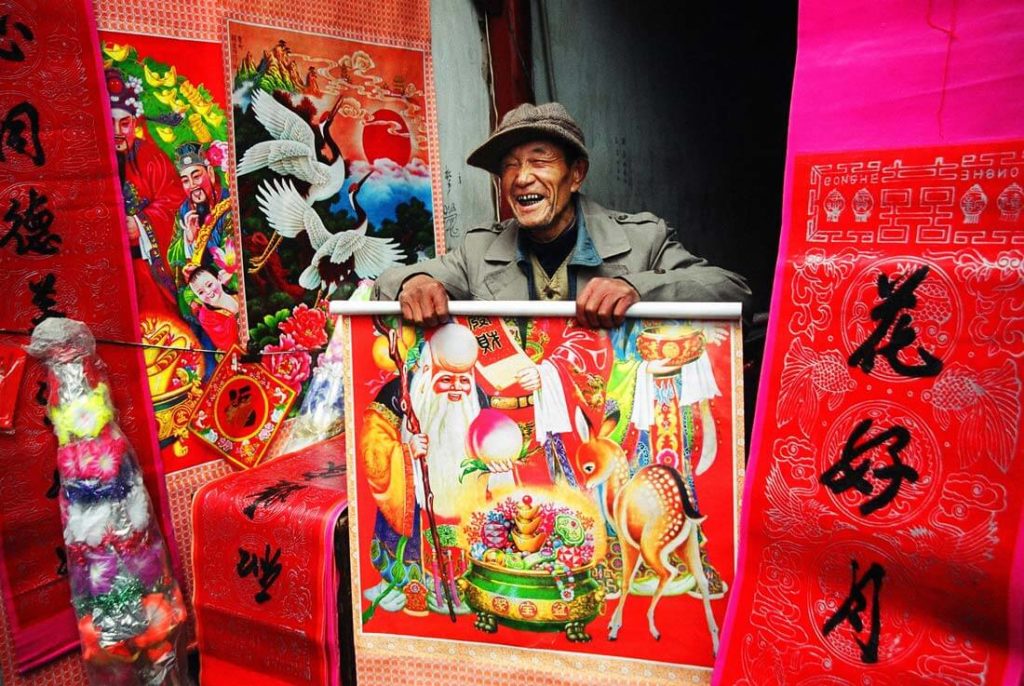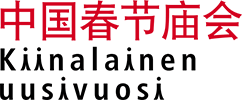Chinese door gods
In the Chinese folk religion, there is a tradition of door gods or menshen, which are guardians of doors and gates. Chinese new year pictures have formed into a form of art during the last three hundred years. Before the new year, Chinese bookstores start to sell them as colorful posters with hopeful texts. Just before the new year, people start hanging or gluing them to their homes to bring good luck, prosperity and long life.
There are many stories on how the tradition started, one of the stories goes like this: during the Tang dynasty (618-907) emperor Taizhong (ruled 626-649) was slightly sick and had a restless night in bed. His dreams were distracted by demons that harassed and threatened the emperor and made noises by throwing bricks around. In the morning all the courtiers were worried. The emperor looked horrible and his illness would probably get worse. At that moment emperor’s bravest warlord general Shen Tu stepped forward and said ”I have seen the horrors of the battlefield and served the emperor during the darkest times, why would I be afraid of demons? Emperor, let me together with general Yu Lei stand next to your door as guards.” The tired emperor agreed. The next night arrived and how come, the emperor spent a peaceful night and looked much healthier in the morning. In few days emperor was totally cured. He announced that the empire can’t afford to keep the best generals guarding his door every night and that’s why he called his painter. Taizhong ordered his painter to paint portraits of his generals, Shen Tun as light-faced and Yu Lei as dark-faced. Shun Tu’s portrait was hung up to the emperor’s door’s right side (looking from the front) and Yu Lei’s portrait to its left side. Demons didn’t spot the difference between real generals and their portraits and that’s how the emperor could sleep peacefully without haunting demons.
Door gods can still be seen, especially in the countryside of China as glued to the door to protect the house from accidents and evil spirits. The door gods are renewed during the Chinese new year and left still for the whole year until being changed again during the next new year.

Chinese new year pictures have many symbolic subjects. A most common subject is a scene from a classic novel or folk story. Some pictures present landscapes, flowers, birds, mythological creatures and chubby, happy kids as a symbol of wellbeing. Prosperity is symbolized with big fishes and long life with its symbols, peaches.
Traditional new year pictures were made by woodblock printing. Nowadays woodblock printing is used to make the outlines and after that, the pictures are painted with a brush. During the times there have been many different ways of producing the new year pictures. Nowadays the pictures are produced in three different centers: Yangliuqing in Tianjin, Taohuawu in Jiangsu and Weifang in Shandong.
